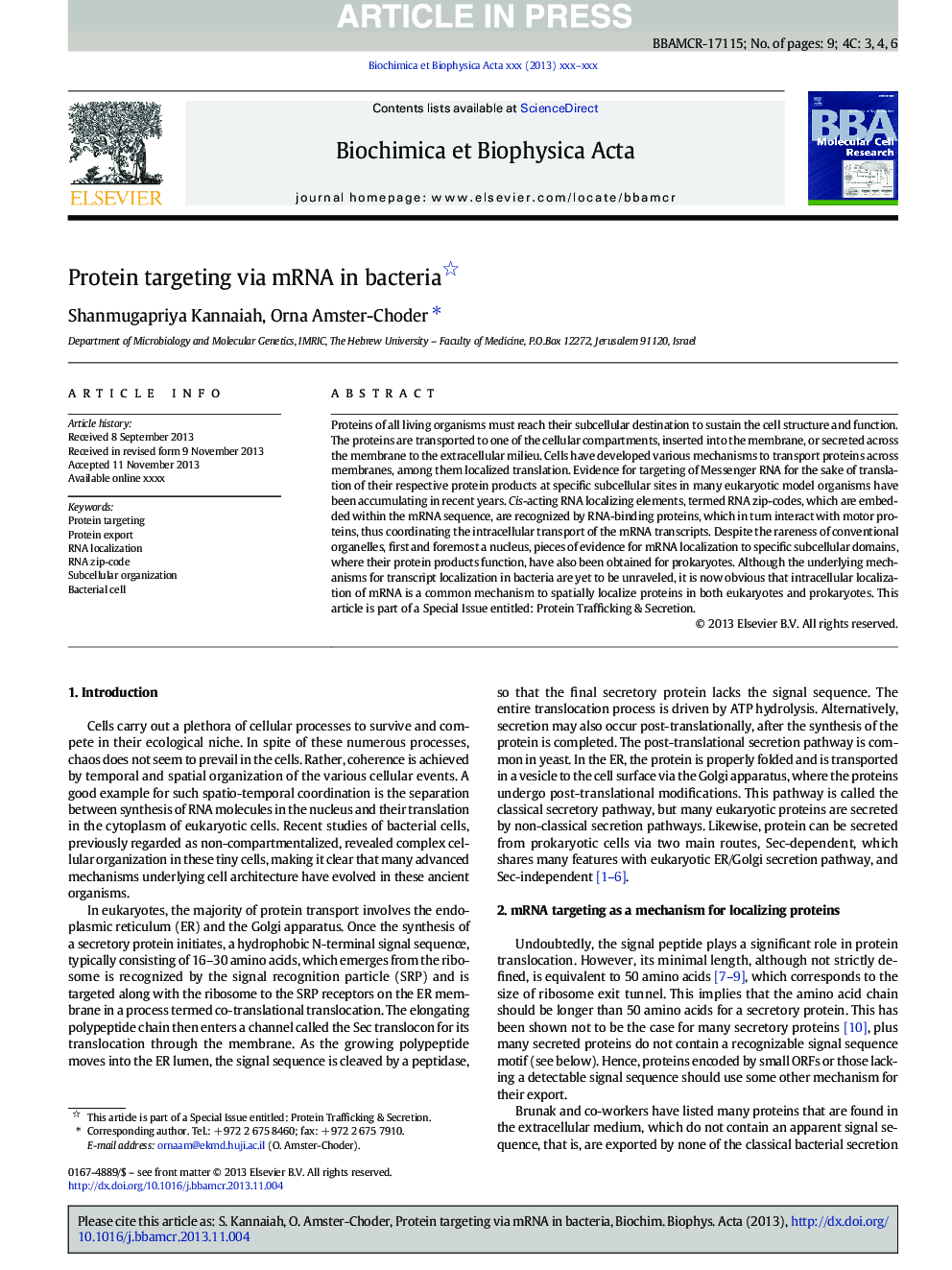| Article ID | Journal | Published Year | Pages | File Type |
|---|---|---|---|---|
| 10802125 | Biochimica et Biophysica Acta (BBA) - Molecular Cell Research | 2014 | 9 Pages |
Abstract
Proteins of all living organisms must reach their subcellular destination to sustain the cell structure and function. The proteins are transported to one of the cellular compartments, inserted into the membrane, or secreted across the membrane to the extracellular milieu. Cells have developed various mechanisms to transport proteins across membranes, among them localized translation. Evidence for targeting of Messenger RNA for the sake of translation of their respective protein products at specific subcellular sites in many eukaryotic model organisms have been accumulating in recent years. Cis-acting RNA localizing elements, termed RNA zip-codes, which are embedded within the mRNA sequence, are recognized by RNA-binding proteins, which in turn interact with motor proteins, thus coordinating the intracellular transport of the mRNA transcripts. Despite the rareness of conventional organelles, first and foremost a nucleus, pieces of evidence for mRNA localization to specific subcellular domains, where their protein products function, have also been obtained for prokaryotes. Although the underlying mechanisms for transcript localization in bacteria are yet to be unraveled, it is now obvious that intracellular localization of mRNA is a common mechanism to spatially localize proteins in both eukaryotes and prokaryotes. This article is part of a Special Issue entitled: Protein trafficking and secretion in bacteria. Guest Editors: Anastassios Economou and Ross Dalbey.
Related Topics
Life Sciences
Biochemistry, Genetics and Molecular Biology
Biochemistry
Authors
Shanmugapriya Kannaiah, Orna Amster-Choder,
